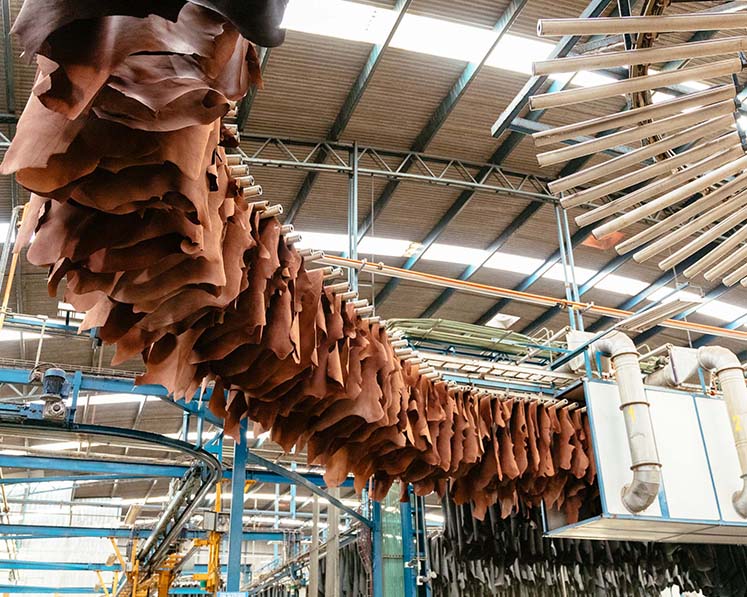You Might Also Like To Read ...

Leather lies in the fabric of America. The leather industry imported more than $1 billion of products in 2019 alone.
Yet not all of these products came alike. There are many types of leather, and you knowing the differences between them can ensure you find the right bag or accessory for you.
What are the animals that manufacturers can use for leather production? What exactly are leather grains? What finishes go into leather products?
Answer these questions and you can find the right leather products to meet your needs. Here is your quick leather type guide.
Animals determine how much people think of leather types. Different animals can make different kinds of leather, each with its strengths and weaknesses.

Cowhide leather is the most well-known type of leather. There are more than 1.5 billion cows in the world. Most of them are used for meat, which results in many hides. Turning these hides into leather articles that can last for years is the best next step in the process.
Leather is strong and insulates well, making it ideal for wallets and bags alike. Yet different types of leathers have their strengths and limitations.
Some leather wallets are made with cowhide, but there are many other leathers, some lighter in weight, that can make very nice small goods.
Sheepskin produces a thin and soft form of leather, especially when compared to cowhide. It is very flexible, making it good for very big or very small leather products.
It can insulate objects, preventing credit cards and coins from getting cold during the wintertime. It is also flame-resistant, though the finish on the skin can break down over time.
But sheepskin can break if enough pressure is applied to it. A knife or pair of scissors can tear through it, so it does not produce good material for some accessories.
Goatskin is good all-around leather. It is not as strong or insulating as cowhide, but it has decent strength and it can keep objects warm. It is not as soft as sheepskin, but it is comfortable to the touch.
Goatskin can absorb the humidity in the air, so it can adapt to changing elements. Objects in goatskin bags do not get damaged by the weather. The skin does have a grainy surface with ridges, which can feel a little constricting depending on the product.

The grain of leather refers to its texture. The grain influences how the leather products appear and how you can use them. People working in roles such as a clothing product tester career often pay close attention to leather grain, since it directly impacts durability, appearance, and overall quality.
Full-grain leather comes from the top layer of the skin. It is a strong and durable leather that originates from below the animal hair.
A leather manufacturer does not sand or buff full-grain leather. Products retain the natural qualities of leather, creating a realistic aesthetic.
If you want different colors of leather, you can buy a full-grain product with an intact grain surface. As time goes on, the surface will break down and develop a patina. It will develop brown hues akin to fall leaves or wood.
Manufacturers split top-grain leather from the top layer of a hide. They sand it in order to remove any bumps or aberrations on the surface of the leather.
The refinement process removes grains from the leather. A manufacturer will then add an imitation grain so the leather remains durable.
Top-grain products are breathable, and they can develop a strong patina. They tend to be less expensive than full-grain products.
Genuine leather does not mean "real leather." It refers to leather that has a corrected grain to it. A manufacturer may remove the natural grain and add an artificial one, or they may spend a long time sanding it to remove aberrations.
Some manufacturers will spray paint the surface of the leather to make it seem more natural. This can make genuine leather less breathable and versatile. But you can buy an affordable handbag or messenger bag with genuine leather.

A leather product can have one of many finishes. Finishes affect the aesthetics, but they can also impact the flexibility of the leather.
Aniline leather products have soluble dyes. These are dyes that seep into the surface of the leather, allowing its natural textures to appear. Manufacturers then put a protective coating over the top, which prevents the leather from wearing down.
This means that cuts and bumps in the leather may become prominent on your products. Manufacturers generally use higher-quality leather for aniline products. This can make them expensive or hard to find.
Semi-aniline products also have soluble dyes. Aniline products have stronger pigments in their dyes, but semi-aniline materials only have light ones. This creates a more natural appearance to the leather.
Semi-aniline is otherwise largely identical to aniline. You can find semi-aniline products in many leather stores.
As the name suggests, pigmented leather has a pigment on it. The pigment lies inside of a polymer coating, which makes the leather look more natural.
Yet the pigment also helps make the leather more durable. This makes it ideal for household objects like chairs.
Follow good leather type tips for pigmented leather. It is durable, but you shouldn't stress the leather to the breaking point.
The diversity of types of leather can be overwhelming. Cowhide is one of the most popular kinds of leather. Yet you can consider sheepskin or goatskin for wallets and bags.
Leather grains affect the aesthetics of products. Full-grain leather can develop unique and rich colors. But top-grain and genuine products are less expensive.
You can find a variety of finishes. Pigmented leather tends to be durable, while aniline and semi-aniline leather look very natural.
See the different options for leather for yourself. WP Standard offers premium leather products. Browse our collections today.